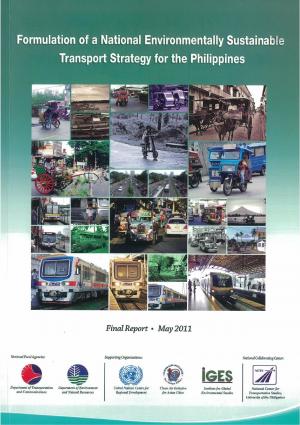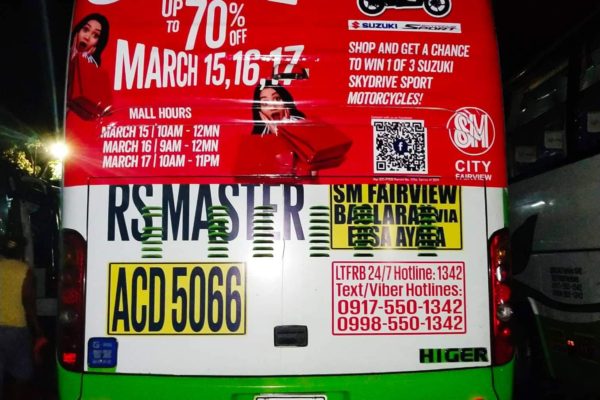Discovering the Influence and Performance of Transit Advertising And Marketing in Urban Advertising Techniques
Transportation advertising has actually come to be a substantial component of metropolitan advertising methods, taking advantage of on the one-of-a-kind dynamics of public transport environments. Its capability to get to a varied and broad audience presents brand names with a possibility to create purposeful connections through regular exposure. Nonetheless, with the rapid evolution of technology and shifting customer habits, the landscape of transit advertising and marketing is going through noteworthy modifications that warrant closer evaluation. What ramifications do these trends hold for online marketers looking for to harness the full possibility of this medium?
The Rise of Transit Advertising And Marketing
As urban populaces remain to swell, the need for cutting-edge advertising and marketing options has caused the increase of transportation advertising as a pivotal component of urban advertising and marketing techniques. This kind of advertising leverages public transportation systems-- such as trains, buses, and trains-- to reach a varied target market in densely booming areas. The efficiency of transit advertising hinges on its ability to involve consumers during their everyday commutes, a frequently overlooked yet crucial time for brand name messaging.
With cities becoming significantly congested, conventional advertising and marketing rooms are becoming limited and less efficient. Transportation advertising uses a vibrant option, enabling brands to display their messages in high-traffic locations where potential clients are continually revealed to the ads. Furthermore, as city locals significantly count on public transport, the importance and visibility of transportation advertising have expanded substantially.
Moreover, technical advancements have boosted the class of transportation advertising, permitting electronic display screens and interactive projects that can record consumer focus better than fixed advertisements. As an outcome, transportation marketing is not only a cost-efficient alternative yet likewise a necessary strategy for brands looking for to attach with urban customers in an impactful and memorable manner.
Key Benefits of Transit Marketing
The efficiency of transit marketing is emphasized by its complex advantages, making it an invaluable tool for urban marketing experts. One of the primary advantages is its extensive reach; transportation systems offer countless guests daily, permitting brand names to link with a diverse audience in high-traffic environments. This presence boosts brand name understanding, ensuring that promotions are seen repetitively by travelers.

Furthermore, transportation marketing is affordable contrasted to other media, supplying a lower price per impression while keeping high exposure. The adaptability of ad layouts, from bus wraps to electronic display screens, permits for creative and impactful campaigns that can adapt to transforming market needs.
Customer Behavior Insights
A substantial portion of customer behavior is influenced by the prevalent nature of transit advertising and marketing in metropolitan settings. This form of advertising records the attention of diverse demographics, involving customers during their daily commutes. As people browse bustling cityscapes, they run into transit ads in different styles, consisting of bus covers, subway posters, and digital displays. The calculated placement of these ads makes the most of exposure, thus enhancing brand name recall.
Research indicates that transit advertising and marketing can evoke emotional actions, causing raised brand fondness. Customers usually connect the experience of travelling with certain brand names, developing a long-term impact that affects getting choices. In addition, the regularity of direct exposure to transit ads cultivates familiarity, which is an essential consider customer count on and commitment.

Furthermore, the common aspect of public transport adds to this sensation; as individuals share spaces, they are more most likely to go over and suggest brands they encounter. Thus, transportation advertising and marketing not only reaches consumers yet likewise promotes social interactions that enhance brand name messaging. Comprehending these behavioral insights permits marketing experts to customize their techniques efficiently, ensuring that their projects resonate with target market in the urban landscape.
Study and Success Stories
Successful implementation of transportation advertising approaches is exemplified via different study that highlight its effectiveness in urban advertising and marketing. One noteworthy instance is the partnership in between a preferred beverage firm and a major city's public transportation system. The campaign made use of bus wraps and indoor posters, causing a 30% boost in brand name recognition and a 15% increase in sales within the target demographic over three months.
An additional successful situation entailed a local dining establishment chain that employed train station advertising and marketing to attract commuters. By developing aesthetically striking ads that supplied timed promotions, the important link restaurant experienced an uptick in foot web traffic, with an outstanding 25% boost in lunch hour customers.
Additionally, a city's tourist board released a transit campaign showcasing neighborhood attractions with bus quit display screens and subway ads. The effort resulted in a significant increase in visitor gos to, as reported by a 40% boost in questions at visitor centers.
These situation researches emphasize the adaptability and potential of transit advertising to engage metropolitan target markets successfully, showing that critical positionings can produce significant rois and enhance brand visibility in bustling urban settings. - Transit Advertising Philippines
Future Patterns in Transportation Advertising And Marketing
As metropolitan landscapes continue to progress, so too does the world of transportation marketing, which is positioned to accept innovative modern technologies and methods. One considerable trend is the combination of digital advertising and marketing screens right into public transit systems.
An additional emerging pattern is the usage of enhanced reality (AR) and digital truth (VIRTUAL REALITY) experiences within transit advertising. These immersive innovations can captivate travelers, transforming ordinary journeys into interactive brand name experiences. Additionally, sustainability is ending up being increasingly vital; green advertising products and practices are likely to obtain grip, mirroring the growing customer need for corporate social obligation.
Lastly, the increase of mobile connection will promote greater combination in between transportation marketing and individual devices. Advertisers can produce smooth cross-channel experiences, enabling instant communication and engagement More hints with prospective clients. Jointly, these trends indicate a transformative future for transit advertising and marketing, offering new opportunities for brand names to get in touch with city target markets.
Conclusion
Transit marketing has actually developed itself as a significant part of urban advertising methods, showing substantial performance via boosted brand visibility and consumer engagement. The capability to adjust messages to particular demographics, paired with the ingenious usage of innovation, placements transit advertising as use this link a driving pressure in modern advertising and marketing (Transit Advertising Philippines). As city settings remain to advance, the future of transportation advertising guarantees additional improvements, ensuring its significance and impact fit consumer perceptions and behaviors in city landscapes
As city populaces continue to swell, the need for cutting-edge marketing options has led to the rise of transportation advertising and marketing as a pivotal part of city advertising and marketing methods.A substantial section of consumer behavior is affected by the prevalent nature of transit advertising and marketing in metropolitan environments. Jointly, these patterns indicate a transformative future for transportation marketing, supplying new avenues for brand names to link with urban target markets.
Transit marketing has developed itself as a considerable component of city advertising strategies, demonstrating substantial performance via improved brand name exposure and customer involvement. As metropolitan settings continue to advance, the future of transit advertising and marketing guarantees further innovations, ensuring its importance and impact in forming consumer understandings and behaviors in metropolitan landscapes.